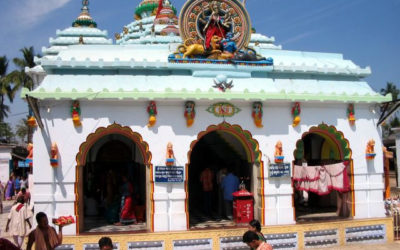The temple is a protected monument under the Archaeological Survey of India. It, carved out in a single mammoth rectangular granite stone, is located at a busy part of Pattambi town, dotted with numerous houses and commercial buildings. Relatively new buildings housing the temple office and amenities for visitors are located within the 100-metre radius of the temple.
“The ASI has favourably considered our request to exempt the temple from certain provisions of the Act as it is situated in a thickly-populated urban area. An order in this regard is likely to be issued soon.
Meanwhile, we are extending all possible support to the ASI to safeguard the original structure which withstood the ravages of time,” said temple committee member K.T. Krishna Das.
Many legends are in circulation about the temple and most of them revolve around the cohorts of Lord Mahadeva. “
As per the most popular among them, the cohorts wanted to craft an abode for their master. The bottom portion of that beautiful abode was carved out of an immense solitary stone, but the top was incomplete. As it was nearing dawn, the cohorts had to withdraw to Mount Kailash and on their way back, they dropped the stone to the earth. It fell on the sacred soil of Nethirimangalam,” says Mr. Krishna Das.
8th century AD
Historians say the temple might have been built in the 8th century AD during the second Chera dynasty. Traces of Pallava style of architecture can be seen on the semi-finished sanctum sanctorum.
It was only a few years ago that the ASI took over the conservation.
Besides Mahadeva, the temple has five associated deities — Narasimhamoorthy, Lord Ganesha, Lord Sastha, Lord Subrahmanya, and Lord Anjaneya.
Interestingly, the granite-rock temple stands in an area, which has no granite rocks.



0 Comments